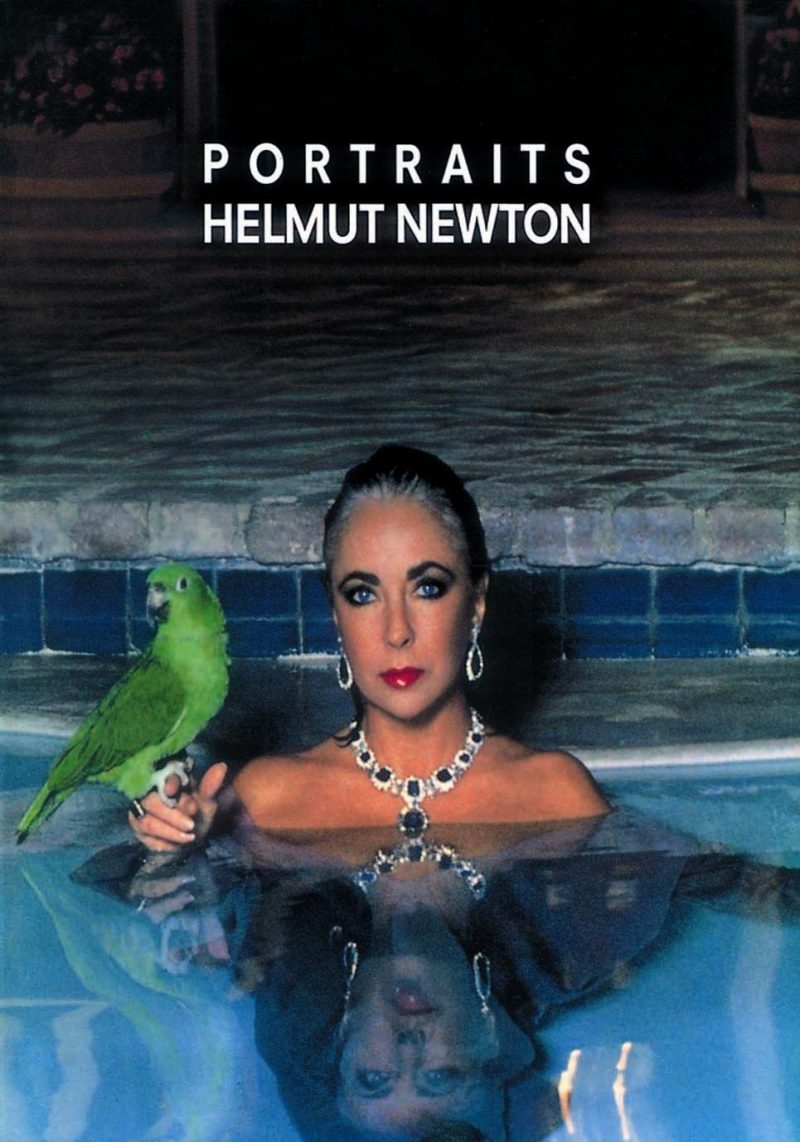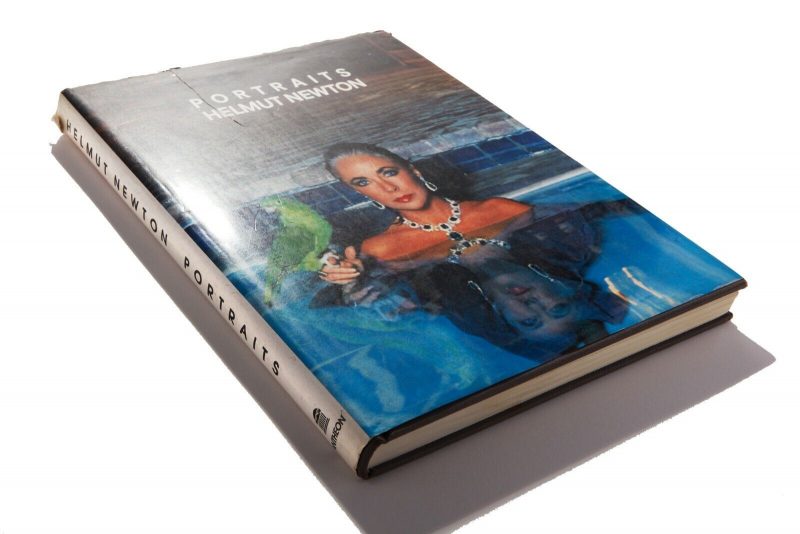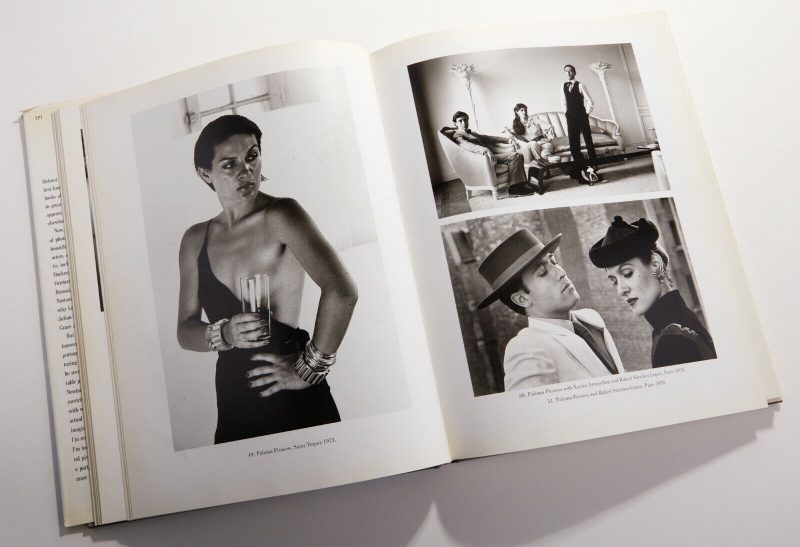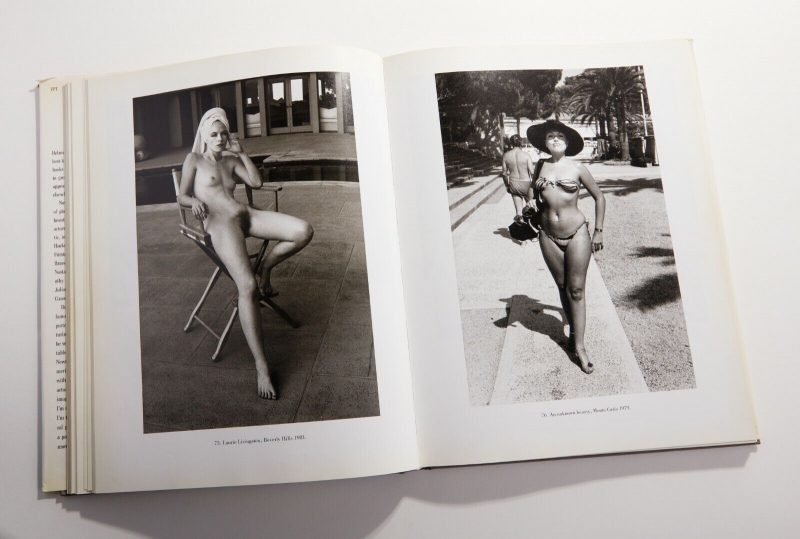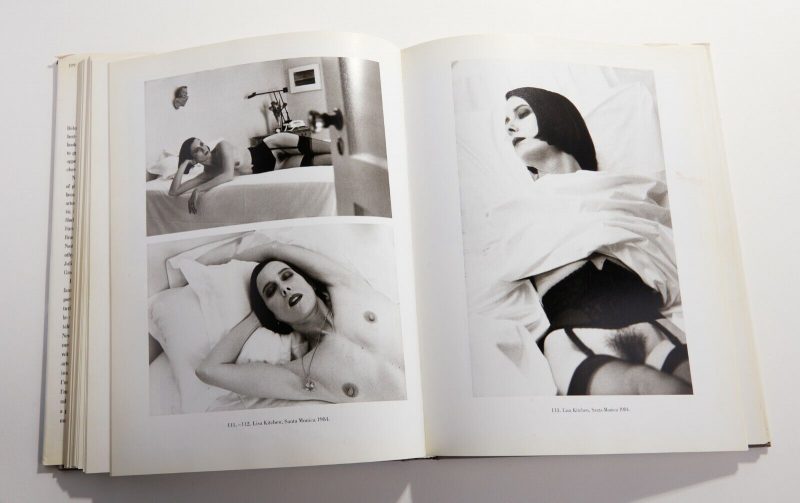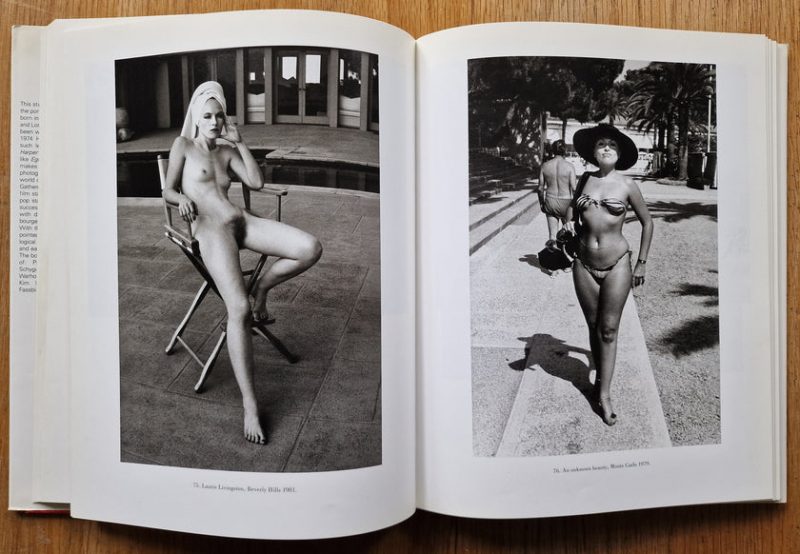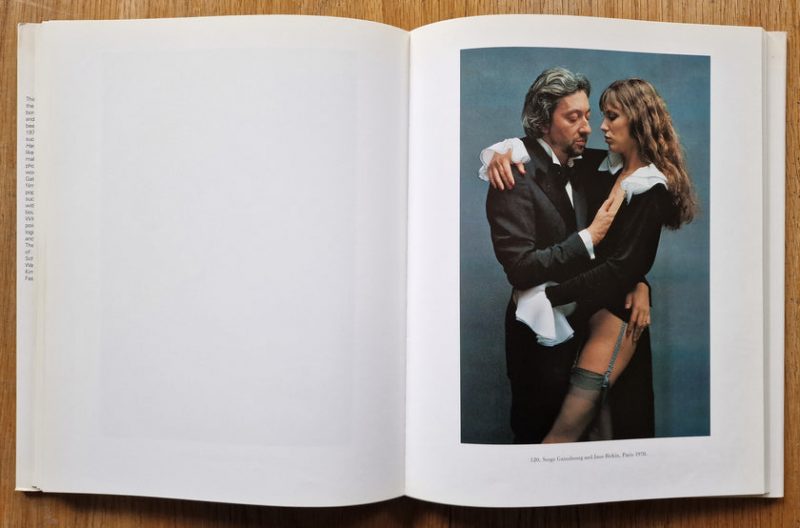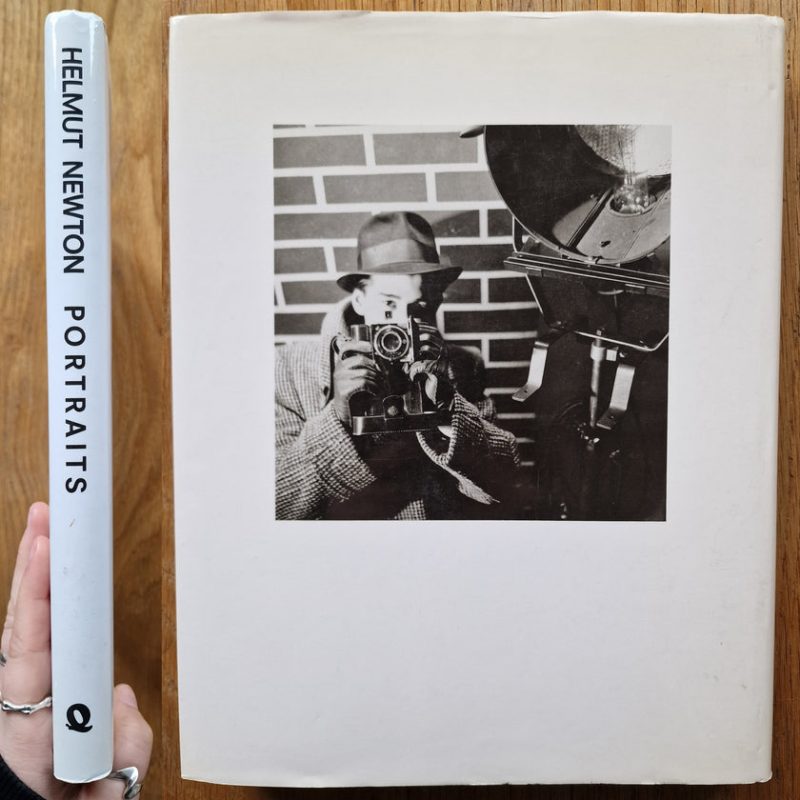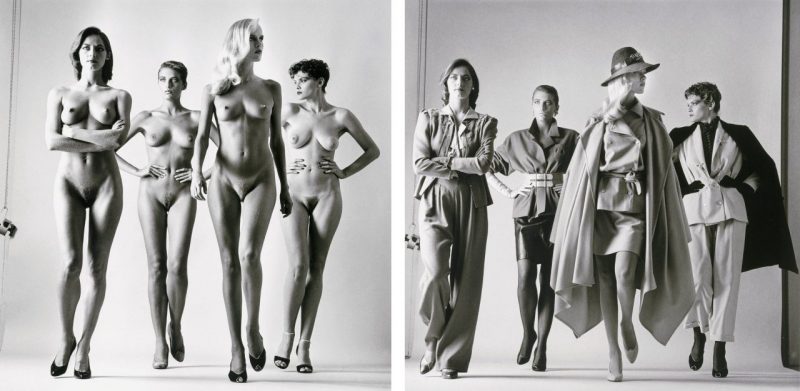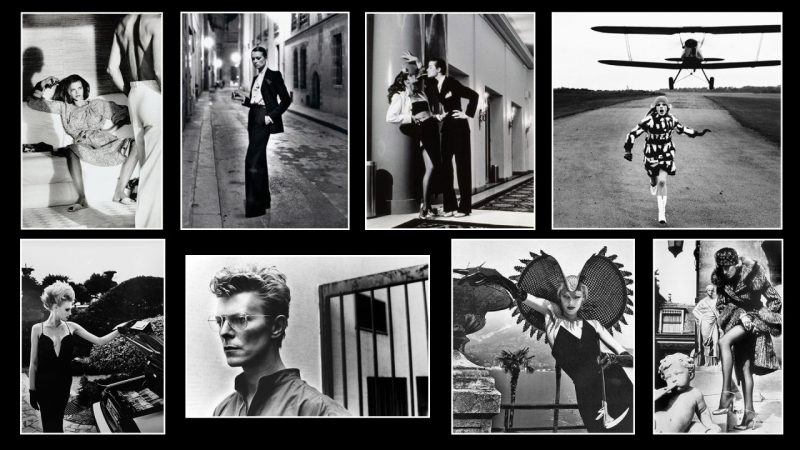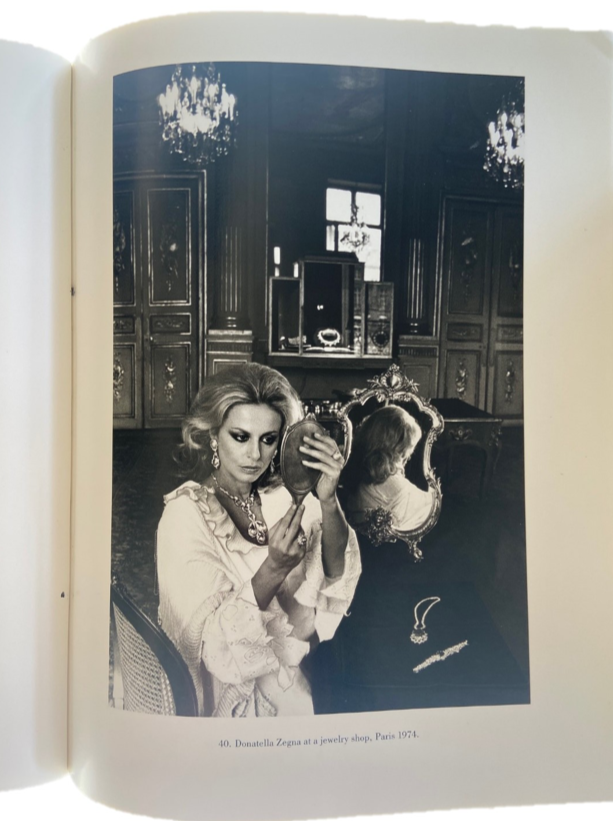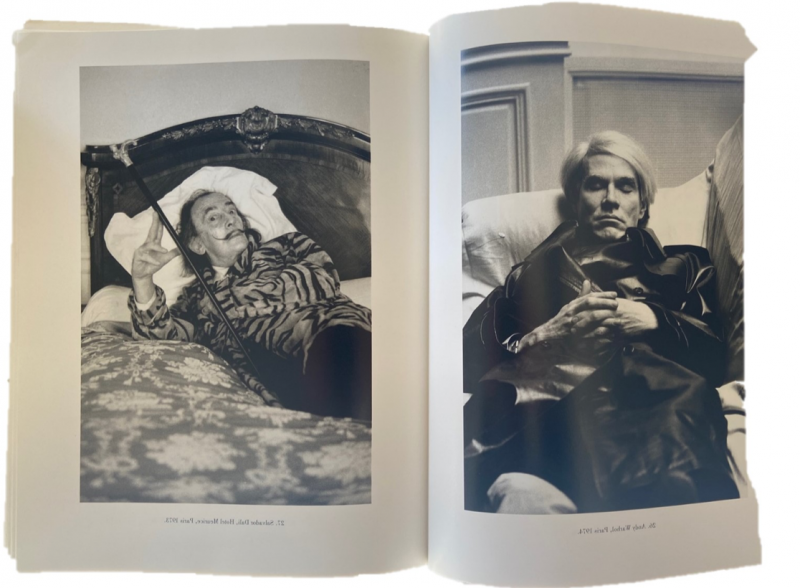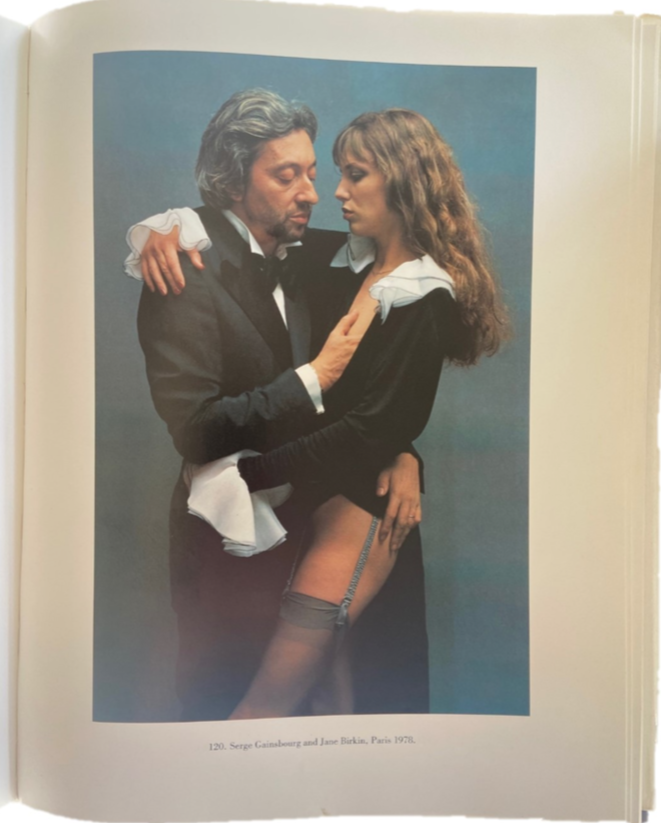Helmut Newton: Portraits 2004
Helmut Newton: Portraits 2004
Original titleHelmut Newton: Portraits
Hardcover. PublishedMay 1, 2004 by Schirmer MoselI. Language: English. 248 pages. 190 PHOTOS.
MINT Condition. Still in its original plastic wrap.
Asking USD$85.
Newton’s collection of portraits from the worlds of film, fashion, politics and culture can be considered a pantheon of VIP’s. But his work is a lot more besides. From his portraits, one can see that he would have most liked to be a Roman paparazzo – as he once admitted. Anyone who had a portrait made by him knew what the result would be, and by the 1980’s there were absolutely no ‘beautiful people’ in this world who did not want to be photographed by him! In front of his camera, both men and women peeled off their covers – literally as well as figuratively. His brilliant staged creations celebrate the attractiveness and prominence of his models as well as their vanity and imperfections. Newton’s top-quality work for major fashion journals and elitist art magazines is likewise first-class erotic art. This collection was first published by us in 1985.
Helmut Newton, born Helmut Neustädter was a German-Australian fashion photographer noted for his nude studies of women.
Born to a German-Jewish button-factory owner and an American mother, Newton attended the Heinrich-von-Treitschke-Realgymnasium and the American School in Berlin. Interested in photography from the age of twelve when he purchased his first camera, he worked for the German photographer Yva (Else Neulander Simon) from 1936. The increasingly oppressive restrictions placed on Jews by the Nuremberg laws meant that his father lost control of the factory in which he manufactured buttons and buckles; he was even briefly interned in a concentration camp. ‘Kristallnacht’ on 9 November 1938 compelled the family to leave Germany.
Newton’s parents fled to Chile. He was issued with a passport just after turning 18, and left Germany on 5 December 1938. At Trieste he boarded the ‘Conte Rosso’ (along with about two hundred others escaping the Nazis) intending to journey to China. After arriving in Singapore, Newton was interned by British authorities and was sent to Australia on board the ‘Queen Mary’. Internees travelled to the camp of Tatura, Victoria by train under armed guard. He was released from internment in 1942, and briefly worked as a fruit-picker in northern Victoria. In April 1942, he enlisted with the Australian Army and worked as a truck driver. After the war, in 1945 he became an Australian citizen, and changed his name to Newton in 1946. In 1948 he married actress June Browne.She later became a successful photographer known as Alice Springs.
In 1946, Newton set up a studio in fashionable Flinders Lane and worked primarily on fashion photography in the affluent post-war years. He shared his first joint exhibition in May 1953 with Wolfgang Sievers, a German refugee like himself who had also served in the same Company. The exhibition of ‘New Visions in Photography’ was held at the Federal Hotel in Collins Street and was probably the first glimpse of ‘New Objectivity’ photography in Australia. Newton went into partnership with Henry Talbot, a fellow German Jew who had also been interned at Tatura.
Newton’s growing reputation as a fashion photographer was rewarded when he secured a commission to illustrate fashions in a special Australian supplement for Vogue magazine, published in January 1956. He won a twelve-month contract with British Vogue and he left for London in February 1957. He left the magazine before the end of his contract and went to Paris where he worked for French and German magazines. He returned to Melbourne in March 1959 to a contract for Australian Vogue.
He settled in Paris in 1961 and continued work as a fashion photographer. His works appeared in magazines including, most significantly, French Vogue and Harper’s Bazaar. He established a particular style marked by erotic, stylised scenes, often with sado-masochistic and fetishistic subtexts. A heart attack in 1970 slowed his output somewhat but he extended his work and his notoriety/fame greatly increased, notably with his 1980 “Big Nudes” series which marked the pinnacle of his erotic-urban style, underpinned with excellent technical skills. He also worked in portraiture and more fantastical studies.
Newton was extremely fond of his hometown of Berlin, and in October 2003 he donated an extensive photo collection to the Prussian Cultural Heritage Foundation, establishing the Helmut Newton Foundation. The foundation’s aim is the conservation, protection and presentation of the oeuvre of Helmut Newton and Alice Springs.
In his later life, Newton lived in Monte Carlo and Los Angeles. He was killed when his car hit a wall in the driveway of the famous Chateau Marmont, the hotel on Sunset Boulevard which had for several years served as his residence in Southern California. It has been speculated that Newton suffered a heart attack in the moments before the collision.
